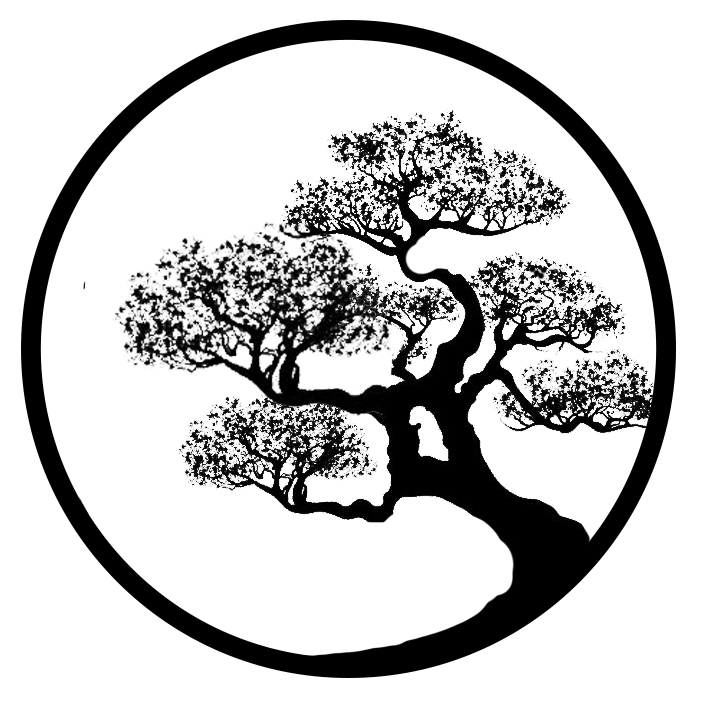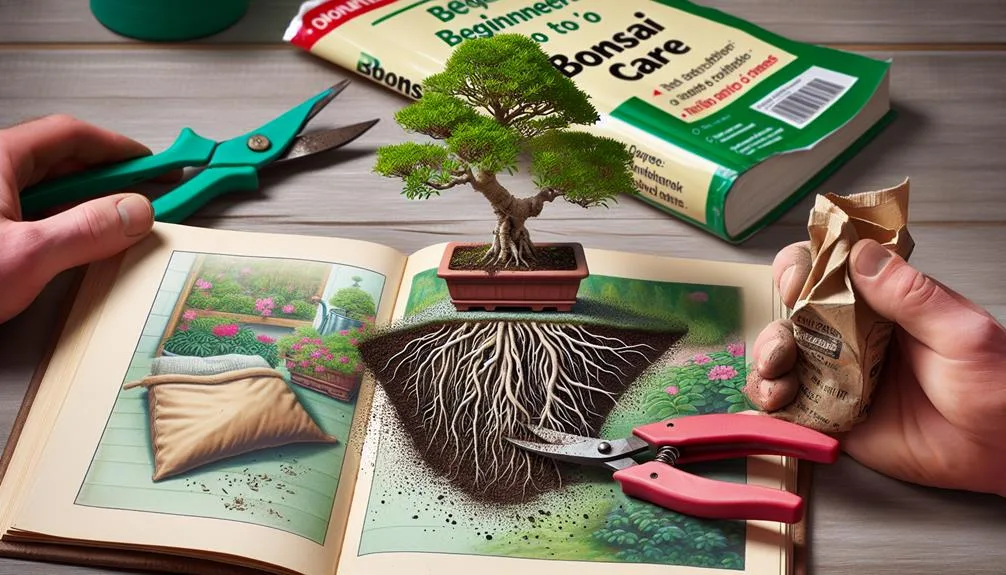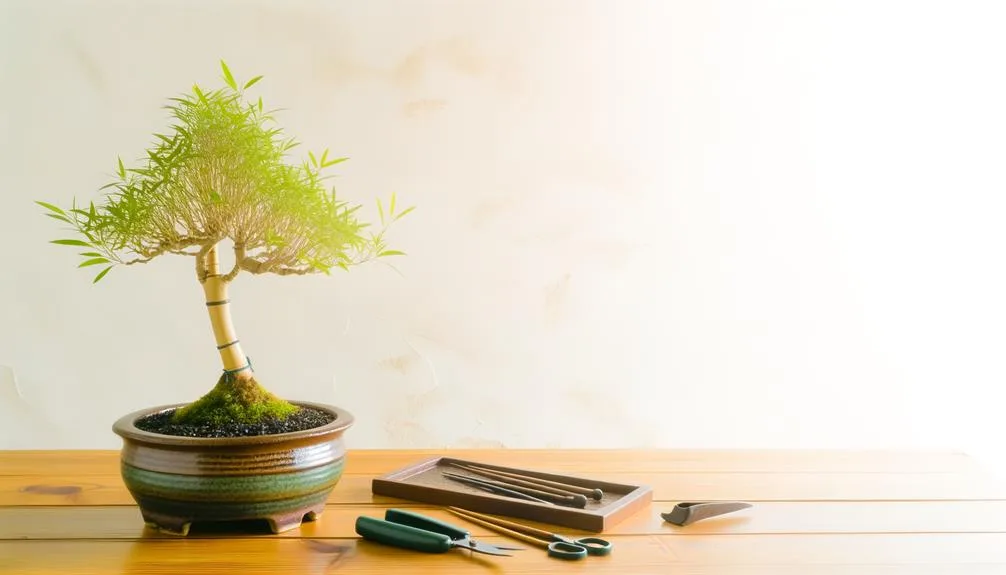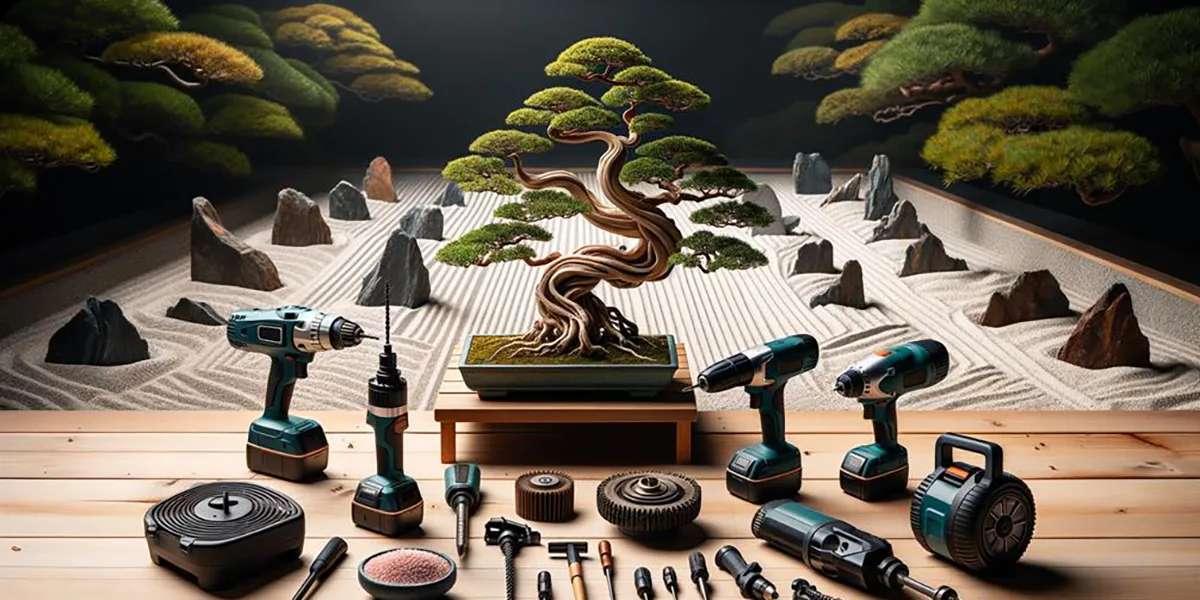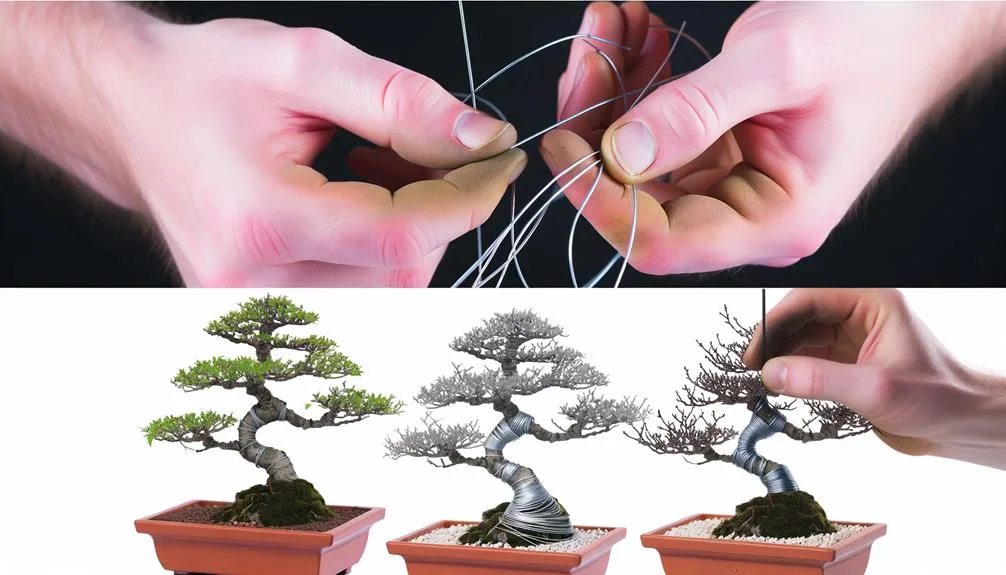As a beginner in the ancient art of Bonsai, I learned that it requires patience, precision, and a deep understanding of plant life.
Despite my diligent intentions, I found myself making common but avoidable mistakes that put the health of my delicate trees at risk.
As a novice enthusiast, I tended to overwater, use the wrong soil, neglect proper pruning and wiring techniques, or place my bonsai in inappropriate lighting conditions.
I will share these common missteps and provide insights on how to prevent them, to ensure your bonsai remains healthy and vibrant.
Key Takeaways From Bonsai Care Mistakes
- Overwatering and underwatering are common bonsai care mistakes that beginners make.
- Pruning and wiring should be done correctly to avoid damaging or killing the bonsai trees.
- Understanding the specific light and fertilization needs of bonsai species is crucial for their health and growth.
- Proper pest control is important for maintaining the health of bonsai trees, and joining a bonsai club can provide valuable advice on managing pests.
Here are some real-life stories and common mistakes beginners make in bonsai care:
- Overwatering: A common mistake among beginners is overwatering their bonsai trees. One individual shared their experience of watering their bonsai daily, believing it would benefit the tree. However, this led to root rot and the eventual decline of the tree’s health. Bonsai requires a balance of moisture and drainage, and overwatering can be just as harmful as under-watering.
- Neglecting to Repot: Another enthusiast recounted their early days of not understanding the importance of repotting. They kept their bonsai in the same pot and soil for years, leading to compacted soil and nutrient deficiencies. The tree eventually became stunted and unhealthy, teaching the grower the critical role of repotting and refreshing the soil.
- Using the Wrong Soil: A beginner bonsai artist once used regular garden soil for their bonsai, not realizing that bonsai trees require a special soil mix that provides proper drainage and aeration. The garden soil led to water retention and root issues, significantly affecting the tree’s growth and vitality.
- Improper Pruning: Stories abound of beginners getting overzealous with pruning, cutting off too much foliage or even important structural branches. This not only damages the aesthetic of the bonsai but can also stress and weaken the tree, sometimes leading to its demise.
- Ignoring Pest Problems: A first-time bonsai owner noticed small bugs on their tree but didn’t take immediate action, thinking it wasn’t a serious issue. The pest infestation grew, eventually harming the tree significantly. This experience taught the grower the importance of regular inspection and prompt treatment of any signs of pests or diseases.
These stories serve as valuable lessons for anyone starting their bonsai journey, highlighting the importance of education, patience, and attentive care in the art of bonsai cultivation.
Bonsai Basics
Bonsai Basics: A Journey into the Fascinating World of Bonsai
Exploring the captivating realm of bonsai, it is crucial to grasp the fundamental principles that govern its design and maintenance. For bonsai beginners, understanding bonsai basics is the initial step towards nurturing a healthy bonsai tree. Bonsai is not merely about growing trees in pots; it is an intricate art form that demands patience, knowledge, and dedication.
The art of bonsai aims to emulate the natural shape of mature trees on a miniature scale. This involves a deep comprehension of different tree species and their growth patterns. Various styles of bonsai exist, each offering a unique representation of nature. As beginners, it is advisable to start with a style that captivates your aesthetic sense and gradually explore other forms as you gain confidence and expertise.
Bonsai care and maintenance play a vital role in comprehending bonsai basics. Each bonsai tree has specific needs regarding watering, pruning, wiring, and repotting. Neglecting these needs can endanger the health of your bonsai.
Bonsai is a journey of continuous learning. Beginners should be prepared for ongoing education, experimentation, and even making mistakes along the way. This process ultimately leads to mastery and the creation of your own remarkable bonsai work of art.
Importance of Correct Watering
Correct watering is a critical aspect of bonsai care, as it significantly influences the health and vitality of your tree. The importance of correct watering cannot be overstated. It can be the difference between a thriving bonsai and one that is struggling for survival.
Common mistakes beginners make when they water their bonsai include:
- Overwatering: This can cause root rot, a disease that can quickly kill your bonsai tree. The roots become waterlogged and oxygen-starved, leading to decay.
- Underwatering: This leads to dehydration, causing the tree to lose vitality and potentially wilt and die.
- Not adjusting for environment: The humidity of the atmosphere plays a significant role in how often you should water your bonsai. Ignoring this factor can lead to either overhydration or dehydration.
Therefore, understanding the watering needs of your bonsai tree is paramount. Different species of bonsai trees require different watering frequencies, so tailor your watering schedule accordingly. Keep a close eye on your tree for signs of dehydration or overhydration and adjust your practices as needed.
Proper Pruning and Wiring Techniques
Proper pruning is not merely a horticultural task but an aspect of artistic design. As such, it’s crucial for new bonsai owners to understand the basics of this technique, and to make sure they’re carrying it out correctly. Improper pruning can severely damage or even kill your bonsai trees, so it’s important to research the specific needs of each variety.
Undeniably, mastering the techniques of pruning and wiring is crucial to the successful shaping and maintenance of bonsai trees. These skills are key to preserving the health and aesthetics of your bonsai, and are a vital part of every bonsai enthusiast’s toolkit.
Wiring, too, requires a careful and informed approach. It’s vital to use the correct gauges and methods to ensure the health and longevity of your bonsai trees. The National Bonsai Foundation is a great resource for learning these proper pruning and wiring techniques.
Consulting with experienced growers can also be invaluable for beginner bonsai enthusiasts. Their advice can help you avoid unnecessary mistakes and make your journey into the world of bonsai a successful and enjoyable one.
The Role of Light and Fertilization
Understanding the role of light and fertilization in bonsai care is equally essential as mastering pruning and wiring techniques. One of the bonsai care mistakes every beginner makes is failing to provide enough light. Sunlight plays a crucial role in photosynthesis, the process through which the tree generates its food. Insufficient light can inhibit this process, leading to the tree’s demise. Therefore, it’s crucial to make sure your bonsai receives enough light.
In the world of bonsai, fertilization also plays a critical role. As a first time bonsai owner, it’s important to understand the specific fertilization needs of your bonsai species. Over or under-fertilization can lead to unhealthy growth or even death.
To ensure proper care for your bonsai, consider the following tips:
- Monitor the available light:
- Place your bonsai in a location with appropriate light levels.
- Avoid placing your bonsai behind glass or plastic, as it can filter out certain light spectrums necessary for photosynthesis.
- Understand the role of fertilization:
- Learn the specific fertilization needs of your bonsai species.
- Avoid over or under-fertilizing. Regular and appropriate fertilization is key to a healthy bonsai.
Pest Control and Bonsai Health
Pest control plays a pivotal role in maintaining the health and longevity of your bonsai tree. Understanding the types of pests that can infest your bonsai and the damage they cause is essential. Pests such as aphids, scale insects, or spider mites can cause your bonsai’s leaves to yellow and fall. In severe cases, these pests can even kill your bonsai.
Joining a bonsai club can provide useful advice on managing pests. Experienced members can guide beginners on early detection and preventive measures, thus avoiding these common bonsai care mistakes.
Another crucial aspect of pest control is the health of your bonsai’s roots. Depending on the soil mix used, your bonsai’s roots may be more or less susceptible to pests. A well-drained soil mix can help prevent root rot, a common issue that attracts pests.
Lastly, providing your bonsai with sufficient potassium can strengthen its resistance against pests. Regular inspections and maintaining a healthy environment for your bonsai can go a long way in keeping it pest-free and ensuring its long-term health.
Frequently Asked Questions
What Is the Rule of 3 in Bonsai Tree?
The rule of 3 in bonsai tree care pertains to structuring the tree with 3 primary branches, each further divided into 3 secondary branches, ensuring a balanced and aesthetically pleasing form of the bonsai.
What Is the One to Six Rule of Bonsai?
The one to six rule in bonsai is a principle ensuring aesthetic balance; the first branch should be one-sixth of the tree’s height. Understanding this rule’s basis can impact growth and enhance the tree’s aesthetics.
What Is the Golden Rule of Bonsai?
The golden rule of bonsai involves emulating the aesthetics of mature trees, which requires understanding pruning fundamentals, watering techniques, soil selection, pot choice, and sunlight requirements to maintain the plant’s health and artistic appeal.
How Do You Take Care of a Bonsai Tree for Beginners?
For beginner bonsai care, select well-draining soil, master watering techniques, understand repotting basics, and learn pruning practices. Ensure ideal lighting conditions and regulate temperature. Consistency and patience are key to nurturing these miniature trees.
